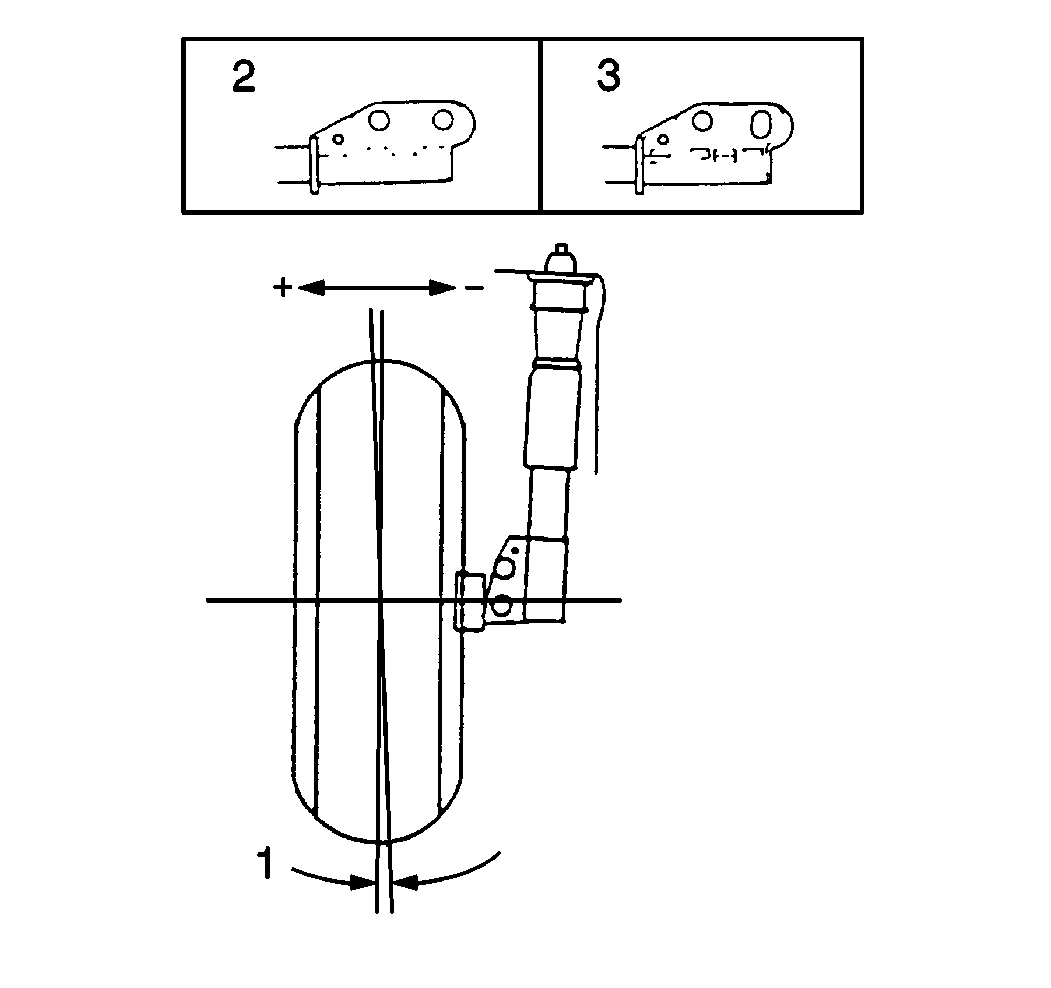- Raise and support the vehicle. Refer to
Lifting and Jacking the Vehicle
in General Information.
- Remove the tire and wheel.

- Remove the strut lower
bolt in order to inspect for an oblong strut lower hole (3). If the strut
lower hole is oblong, loosen the strut upper bolt in order to allow for camber
adjustment.
If the strut lower hole is NOT oblong, perform the following steps:
| 3.2. | Secure the strut in a vise. |
| 3.3. | File the strut lower hole laterally (3) in order to allow for
camber adjustment. |
Notice: Use the correct fastener in the correct location. Replacement fasteners
must be the correct part number for that application. Fasteners requiring
replacement or fasteners requiring the use of thread locking compound or sealant
are identified in the service procedure. Do not use paints, lubricants, or
corrosion inhibitors on fasteners or fastener joint surfaces unless specified.
These coatings affect fastener torque and joint clamping force and may damage
the fastener. Use the correct tightening sequence and specifications when
installing fasteners in order to avoid damage to parts and systems.
| 3.5. | Install the strut bolts. |
- Adjust the camber.
Tighten
Tighten the strut lower nuts to 123 N·m (90 lb ft).
- Install the tire and wheel.
- Lower the vehicle.

